Communication is key to overhaul safeguarding
- 31/07/2019


Communication is key to overhaul safeguarding
by Marian Casey-Maslen, Executive Director, CDAC Network
The term 'safeguarding' has been squarely in the spotlight in recent times and is now used to refer to all areas relating to prevention of and protection against sexual exploitation and abuse, harassment and bullying. Heightened use of the word is a direct result of the abuses that came to light in the last few years, which shook the sector and prompted an overhaul of systems, policies,procedures and entire organisations.
In the last month, 30 donors met to agree on a new safeguarding standard put forward by the Organisation for Economic Co-operation and Development Development Assistance Committee, which, although not legally binding, does put in place a formal peer review process. According to the Committee's chair, Susanna Moorehead, this represents a "first critically important step".
While change is slow at the global level, groups, individuals and whistleblowers have been pushing for some time for a victim- or survivor-centred approach to support people to report abuses without fear of reprisals, cover-up or inaction and for open, robust mechanisms for this to happen. Last year, DFID organised a global summit in London and introduced enhanced standards. Since then a lot has changed within aid organisations and in the public arena where powerful movements such #Aidtoo and #Metoo are prompting action and driving frank discussion.
But for many, the word safeguarding does not mean very much. It does not necessarily capture people's experience or understanding of these issues. This word, coined in the UK, is hard to translate into other languages. So what's being done to communicate all that safeguarding has now come to mean to these audiences? Are we doing enough to get vital information across for people to understand what needs to be done to put adequate measures in place, and, importantly, how to report abuses?
Upgrading policies and procedures is only half the battle. More needs to be done to communicate what all this means to different audiences with different information needs in different contexts. Humanitarian action is evolving in technological advancement and in its realisation people should have a say in decisions that affect their lives. Such developments mean new actors from outside the sector or indeed local partners are taking the lead but have not necessarily had adequate training to understand how to create 'safe' programme environments or promote and support the right behaviours.
Along with experts,Safer Edge, and DEPP Innovation Labs, we identified a big gap in resources to put in place basic building blocks for good safeguarding practice, based on the principle it is everyone's responsibility.
Download and test these tools to guide good safeguarding practice. Let us know what you think!




















